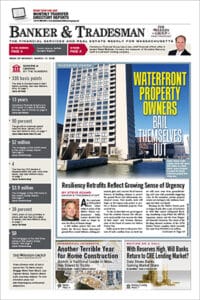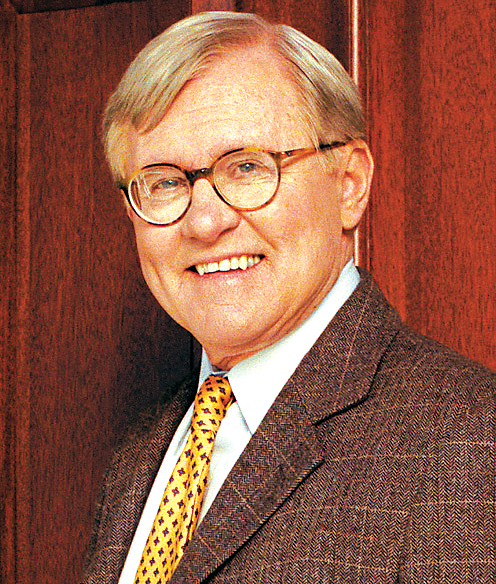As expected, the Federal Reserve raised its benchmark short-term interest rate for the first time in a year, pushing up the federal-funds rate by a quarter percentage point to between 0.50 percent and 0.75 percent. Fed officials said an improving economy was ready for higher borrowing costs, pointing to “solid” job gains, and rising inflation and consumer spending.
“The stance of monetary policy remains accommodative, thereby supporting some further strengthening in labor market conditions and a return to 2 percent inflation,” the Federal Open Market Committee said in a statement.
In new language in its statement, the Fed said the rate increase came “in view of realized and expected labor-market conditions and inflation,” a sign officials see the labor market as close to, or at, full employment.
In a press conference following the announcement, Fed Chair Janet Yellen said the decision to raise rates “is a vote of confidence in the economy,” noting that she doesn’t see the central bank as behind the curve. She added that policy continues to be supportive to a moderate degree and inflation is still operating below the Fed’s 2 percent objective.
Economic projections for the coming years were generally rosier than the last batch in September. They expect inflation to rise from 1.5 percent in 2016 to 1.9 percent in 2017 and to its target of 2 percent in 2018. They saw the jobless rate falling to 4.5 percent next year and remaining there through 2019. Officials predicted the economy would expand at a median annual pace of 1.9 percent this year and 2.1 percent in 2017, a slight improvement from September.
The Fed continues to expect “gradual” rate increases, the statement said, although forecasts showed officials see rates rising faster next year than previously thought. According to the projection of 17 officials, the median fed-funds rate is anticipated to reach 1.4 percent by the end of 2017, 2.1 percent at the end of 2018 and 2.9 percent in 2019. That implies three quarter-percentage-point interest-rate increases over each of the next three years. That is a faster pace than officials projected in September, when they only saw two rate increases next year.
The market forecast is calling for two hikes in the next two years and one in 2019. This would bring the overnight rate to 1.12 percent for December 2017, 1.62 percent at year-end 2018 and 1.87 percent for 2019.
Consider A Bond Ladder
With bond yields still near historic lows, investors in fixed-income securities face a dilemma. Short-term bonds offer sub-par yields, but provide reinvestment opportunities in a rising rate environment. Longer-term bonds secure a higher yield, but present larger losses if market rates rise.
Ten-year Treasury notes currently yield about 2.40 percent, not a great return given the interest rate risk in holding the security over the next decade. If yields were to rise 100 basis points to 3.40 percent, the price would drop almost 9 percent. In this scenario, a five-year Treasury issue yielding 1.9 percent would lose 4.6 percent and a 1.2 percent two-year note would drop 2 percent. Even if bonds are held to maturity, experiencing price losses only on paper, the investor still foregoes the opportunity to earn higher returns if yields rise.
The opposite would occur if rates fall, resulting in a sharp rally and producing sizeable unrealized gains. If this were to happen, the investor benefits from having locked in above-market yields. The investor is faced with the challenge of managing a portfolio structured to perform in either scenario.
One solution is to create a “bond ladder.” A laddered portfolio consists of securities that mature in successive years, starting in a few years and extending out to five years or longer. Assembling a stable basket of cash flows avoids locking in all one’s funds at “low” yields, while enabling the investor to pick up some additional income.
The benefit of a ladder is that as rates move higher, bonds coming due in the near term can provide funds for reinvestment when the alternatives may be more attractive. Depending on the investor’s preference and individual situation, the principal can be put to work at the desired maturity. If current yields are higher than the bonds rolling off, then the investor is able to increase overall returns, boosting portfolio performance.
At the close of every year, it seems the market prognosticators predict higher rates for the ensuing 12 months. Heeding these warnings, many investors flock to ultra-short-term bonds, sacrificing income. According to academic studies, by investing the bulk of the portfolio in short-term, low-yield bonds, investors are exposed to a different risk over time: earning low yields. There is an opportunity cost of sitting at near zero and waiting for higher rates, as the conventional wisdom about bonds does not always play out. Just as a well-balanced portfolio consists of several types of investments, so too should it contain a well-structured schedule of maturities.
Robert B. Segal is president of Atlantic Capital Strategies Inc., an investment advisor located in Bedford. He can be reached at bob@atlanticcapitalstrategies.com.






